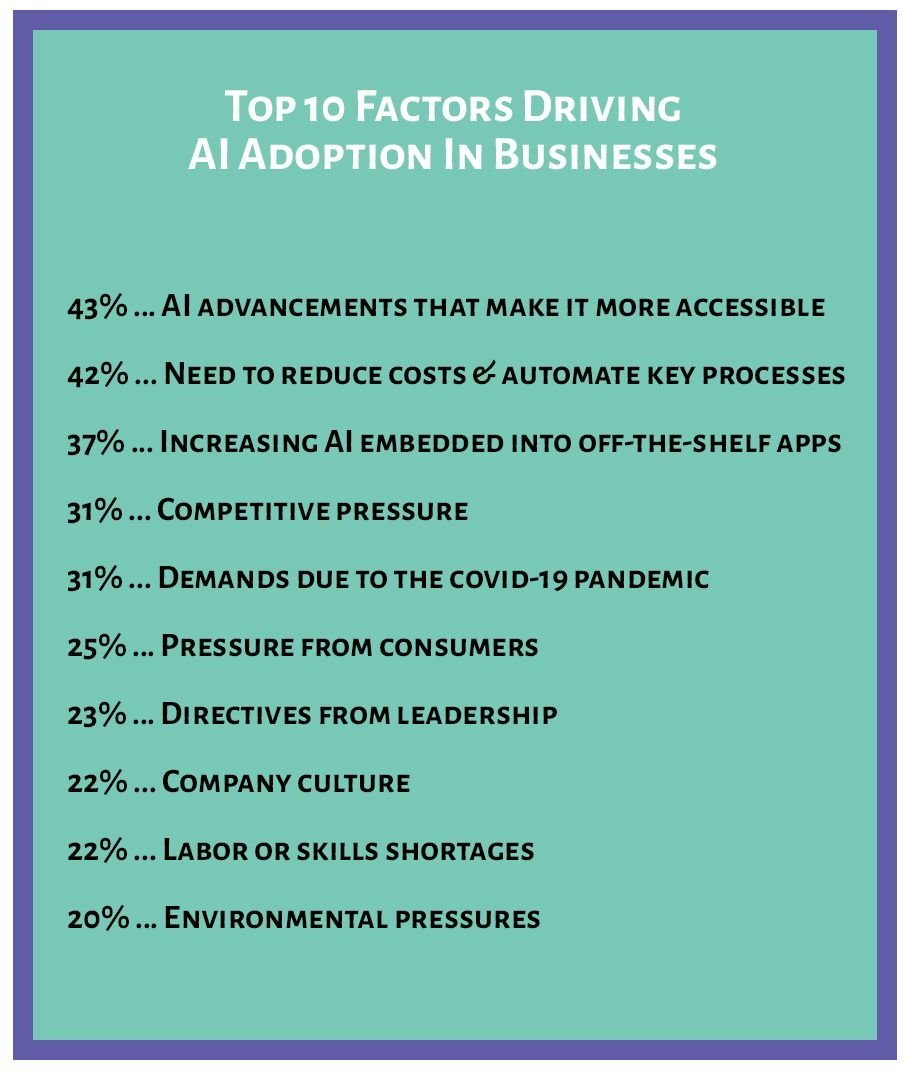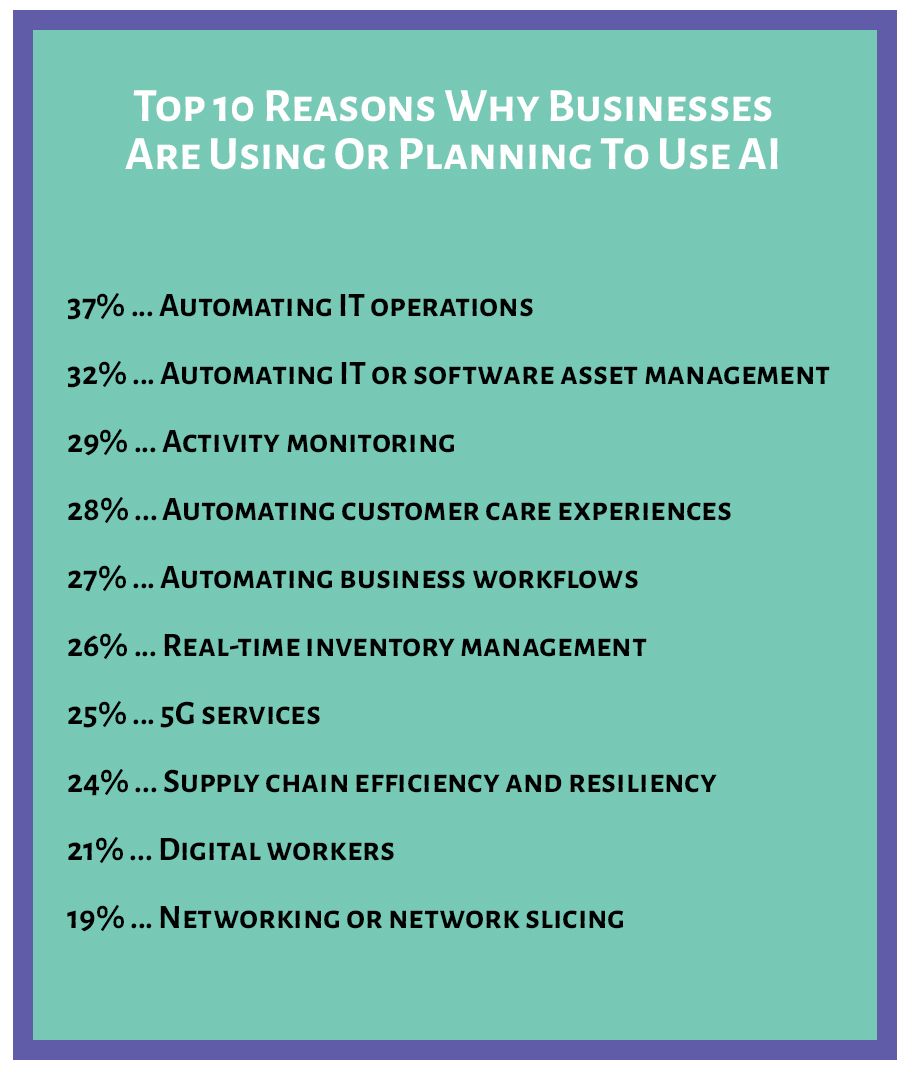Building an AI Strategy Roadmap: From Vision to Execution

Artificial Intelligence (AI) has become an indispensable tool for growth and innovation in the current business milieu. At Brainpool.ai, we recognise AI's pivotal role in transforming the business landscape.
Our mandate revolves around three core principles: automating manual, repetitive tasks to enhance efficiency; initiating AI adoption with a Proof of Concept (PoC) to validate ideas in a practical setting; and emphasising the importance of a robust data and cloud infrastructure as the foundation for any successful AI implementation.
This blog post will guide you through Brainpool.ai's structured approach to integrating AI into your business. From understanding AI's potential to devising a comprehensive strategy and executing it effectively, each step is designed to seamlessly integrate AI into your organisation's fabric, ensuring it becomes a natural extension of your existing operations.
Contents:
Step #1: Understanding AI and its business implications
Step #2: Identifying your business goals and AI’s role
Step #3: Assessing your organisational readiness
Step #4: Developing your AI vision and strategic objectives
Step #5: Building your in-house and external AI teams
Step #6: Creating your roadmap – short-term and long-term
Step #7: Data strategy and governance best practices
Step #8: Choosing the right technologies and partners
Step #9: Implementing and scaling your model
Step #10: Monitoring and continuous improvement
In summary
Step #1: Understanding AI and its business implications
Artificial Intelligence (AI), in its essence, is a transformative technology that has the potential to revolutionise every sector by automating repetitive, manual tasks.
At Brainpool.ai, we emphasise this aspect, recognising that a large part of AI's impact can be attributed to its ability to streamline routine tasks. By automating traditionally time-consuming processes and those prone to human error, AI enhances efficiency and allows human talent to focus on more complex and creative aspects of the business.
Various forms of AI, such as Machine Learning (ML) and Natural Language Processing (NLP), offer diverse applications for automating these mundane tasks.
For instance, ML algorithms can analyse large datasets to identify patterns and make predictions, automating decision-making processes in customer service, inventory management, and market analysis.
Similarly, by understanding and processing human language, NLP can automate and improve communication processes, from customer interactions to internal reporting.
Beyond automation, AI also offers additional benefits to businesses. These include enhancing customer experiences through personalised recommendations, improving risk management through predictive analytics, and fostering innovation by uncovering new insights and opportunities.
AI's ability to process and analyse data at an unprecedented scale allows businesses to make more informed decisions, driving growth and competitiveness in their respective industries.
Step #2: Identifying your business goals and AI’s role
In crafting an AI strategy, aligning AI initiatives with overarching business goals is paramount, especially when considering the automation of repetitive tasks.
This alignment ensures that AI solutions are technologically advanced and contribute meaningfully to the business's objectives, such as increasing efficiency, reducing costs, or enhancing customer satisfaction.
To identify potential areas for AI implementation, businesses should thoroughly analyse their operations, pinpointing repetitive and time-consuming tasks. These tasks are prime candidates for automation.
For example, in customer service, AI can automate responses to common queries, or in finance, it can streamline transaction processing. This approach optimises resources and frees employees to focus on more strategic, creative tasks that AI cannot replicate.
Understanding the impact of AI on existing business processes involves assessing how these technologies integrate with and enhance current workflows. It's crucial to evaluate the readiness of existing systems for AI integration and anticipate the need for employee training or process redesign. The aim is to create a synergy where AI solutions complement and elevate the existing processes rather than disrupt them.
By focusing on automating repetitive tasks through AI, businesses can achieve significant improvements in operational efficiency. However, this should be done with a clear understanding of how AI will fit into the current business model and contribute to the long-term goals, ensuring that the implementation of AI is strategic, purposeful, and sustainable.

Step #3: Assessing your organisational readiness
Evaluating organisational readiness is a critical step in automating repetitive tasks using AI. This assessment begins with assessing the existing technical infrastructure. An organisation must have the necessary hardware and software to support AI technologies.
For instance, implementing AI for data processing requires robust servers and cloud storage solutions, while advanced analytics might need powerful computing resources. The compatibility of these technologies with AI tools is essential to ensure smooth automation processes.
Equally important is evaluating the current skill set of the workforce. While AI can automate many tasks, it requires human oversight and interaction. Employees need to be trained in using AI tools, understanding their outputs, and making informed decisions based on them.
Identifying skill gaps is crucial; this might include a lack of expertise in data science, machine learning, or even basic digital literacy, depending on the organisation's current status.
Furthermore, fostering a supportive culture for AI adoption is essential. This involves creating an environment where employees are encouraged to embrace AI, understand its benefits, and adapt to new working methods. Change management strategies, including clear communication about the purpose and benefits of AI, can help mitigate resistance and build a more receptive culture.
Lastly, organisations must identify gaps in data management and technology. Adequate data policies and infrastructure must be in place to feed AI systems with high-quality, relevant data.
This step is critical because the efficiency of AI in automating tasks largely depends on the quality and availability of the data it processes. By addressing these areas, organisations can better prepare themselves for successful AI integration, particularly in automating repetitive tasks.
Step #4: Developing your AI vision and strategic objectives
Developing a coherent AI vision and strategic objectives is pivotal, mainly when focused on automating manual or repetitive tasks.
A clear AI vision statement should articulate how AI will transform the organisation, specifically by automating these tasks to enhance efficiency and effectiveness. This vision is a guiding beacon, ensuring all AI initiatives align with the organisation's broader goals and values.
When defining AI objectives, it’s crucial to ensure they are specific, measurable, and achievable, with a strong emphasis on the automation aspect. Objectives could include reducing manual data entry by a certain percentage, automating customer service responses to improve efficiency, or streamlining supply chain processes. These objectives should have clear metrics for success, enabling the organisation to track progress and make data-driven decisions.
Also, aligning these AI objectives with the organisation's broader strategies is essential for cohesive growth. For instance, if a company's strategic goal is to enhance customer satisfaction, automating customer service inquiries with AI can be a significant step towards achieving this. The alignment ensures that AI initiatives contribute directly to the overarching business goals, providing a clear pathway for strategic decisions and investments in AI technology.
Developing an AI vision and strategic objectives should be centred around the practical benefits in sync with organizationally essential mandates. This approach streamlines operations and aligns AI efforts efficiently, paving the way for a more competitive business model.
Step #5: Building your in-house and external AI teams
For effectively implementing solutions to streamline routine operations, assembling a skilled AI team is essential.
This team should include roles such as data scientists, who analyse and interpret complex data; software engineers, who build and maintain AI systems; and product managers, who oversee the development and deployment of AI solutions. Each role contributes uniquely to creating systems that enhance operational efficiency and reduce manual workload.
The decision between internal development and external hiring hinges on the organisation's current capabilities and long-term goals.
Developing internal talent can foster a deeper understanding of company-specific challenges and long-term dedication to the company's vision. In contrast, external hiring can quickly bring in fresh perspectives and specialised skills, which is particularly beneficial for the rapid development and implementation of AI solutions.
Training and development strategies for the current workforce are crucial in facilitating a smooth transition to a more automated workflow. This involves upskilling employees to work alongside AI technologies and fostering an understanding of how these technologies can aid their work. Training programs should focus on areas like data literacy, basic AI principles, and how to interact with AI systems.
By equipping employees with these skills and knowledge, they can better adapt to and leverage AI tools for increased productivity and reduced manual effort in their daily tasks.
Step #6: Creating your roadmap – short-term and long-term
Creating a roadmap for AI integration involves a strategic, phased approach. This roadmap should outline short-term and long-term objectives, ensuring a balanced focus on immediate improvements and future transformation.
In the short term, the focus should be identifying and implementing AI solutions that quickly streamline routine processes and reduce manual workload.
These 'quick wins' are crucial for demonstrating the value of AI investments and gaining stakeholder buy-in. For example, automating data entry or customer query responses can show immediate efficiency gains.
For long-term goals, the roadmap should envision transformative changes that AI can bring over time. This might include more complex automation like predictive analytics for business forecasting or AI-driven decision-making processes.
These objectives often require more significant investments in technology and workforce training but promise substantial returns in terms of operational excellence and strategic advantage.
Crucially, flexibility should be a core component of the AI roadmap. AI is continually advancing, with new technologies and methodologies emerging regularly. The roadmap must, therefore, be adaptable, allowing for the incorporation of recent AI advancements and changing business needs.
This adaptability ensures the organisation can continually optimise and expand its AI-driven process enhancements, staying at the forefront of technological innovation and maintaining a competitive advantage.

Step #7: Data strategy and governance best practices
The success of AI initiatives, particularly those aimed at streamlining operational processes, hinges on the quality of data and its effective management.
High-quality data ensures that AI systems can accurately automate tasks such as information sorting and customer interactions. Thus, a robust data strategy is essential to collect, store, and analyse clean, relevant data.
Developing a data governance framework is vital in maintaining data integrity and security. This framework should define who can access data and how it is used and stored.
It ensures that the data-feeding AI systems for process optimisation are accurate, up-to-date, and managed responsibly. Such governance protects the organisation from data breaches and ensures compliance with legal standards.
Ethical considerations and compliance are paramount in data usage, mainly when using AI for sensitive information handling tasks.
Organisations must adhere to ethical guidelines and legal regulations regarding data privacy and protection. This involves obtaining necessary consent for data collection, ensuring transparency in how AI systems use data, and avoiding biases in AI algorithms.
Step #8: Choosing the right technologies and partners
Selecting appropriate AI technologies and platforms is critical in optimising routine business operations.
The evaluation process should consider not only the technical capabilities of these technologies but also their alignment with the specific needs of process automation. This includes assessing tools for their ability to efficiently handle tasks like data processing, customer service automation, or predictive maintenance, depending on the organisation's requirements.
Partnerships play a significant role in AI development, especially for businesses looking to enhance their operational workflows. Collaborating with AI specialists or technology providers like Brainpool.ai can bring expertise and insights that accelerate the development and implementation of AI solutions.
These partnerships can offer access to advanced technologies and industry-specific knowledge, which is invaluable for tailoring AI solutions to manage repetitive and time-consuming tasks effectively.
Balancing in-house development with outsourced solutions is another strategic consideration. While developing AI capabilities internally allows for customised solutions and greater control, it requires significant investment in talent and infrastructure.
On the other hand, outsourced solutions can provide immediate access to advanced AI capabilities and expertise but may require adjustments to align with specific business processes.
The decision should be based on the organisation's current resources, long-term goals, and the complexity of tasks that need streamlining through AI.
Step #9: Implementing and scaling your model
Implementing and scaling AI models requires adherence to best practices, especially for enhancing process efficiency.
A structured approach to implementation ensures that AI systems effectively handle tasks like streamlining data entry or optimising customer interactions. This involves thorough planning, clearly defining objectives, and ensuring all stakeholders align with the project's goals.
Integrating AI solutions with existing systems is a common challenge in AI project implementation. Smooth integration is crucial for ensuring that these solutions effectively facilitate routine operation optimisations.
This might require upgrading infrastructure or retraining staff to adapt to new workflows. Another challenge is managing data quality and availability, as AI systems rely heavily on data to automate tasks effectively.
A modular and flexible approach is recommended for scaling AI solutions across the organisation. Starting with small-scale implementations allows for testing and refining AI models before expanding them organization-wide.
This incremental approach helps identify potential issues early and address them effectively. Additionally, it's essential to ensure that the AI solutions are scalable and adaptable to different organisational departments or functions.
Strategies for scaling also include continuous employee training and development to help them adapt to new tools and workflows. As AI solutions take over routine tasks, employees can be trained for more complex and strategic roles, ensuring that the workforce evolves alongside the technology.
This holistic approach to implementation and scaling ensures that AI solutions are technically sound and aligned with the organisation’s evolving needs and objectives.
Step #10: Monitoring and continuous improvement
For AI initiatives focused on optimising routine business operations, establishing clear metrics and Key Performance Indicators (KPIs) is essential to monitor performance.
These metrics should reflect the effectiveness of AI in streamlining standard tasks, such as reducing processing times, improving accuracy in data handling, or enhancing customer response efficiency. Regular monitoring of these indicators helps assess AI's impact on operational workflows and identifies areas for improvement.
The importance of continuous learning and refinement of AI models cannot be overstated. As business environments and processes evolve, AI systems must be updated to maintain their efficiency in handling operational tasks.
This involves regularly training the AI models with new data, refining algorithms to adapt to changing patterns, and continuously evaluating their performance against set benchmarks.
Encouraging an organization-wide culture of innovation and adaptation is crucial for the sustained success of AI projects. This culture fosters an environment where employees are open to adopting new technologies and adapting their workflows accordingly.
As AI takes on more routine and repetitive tasks, employees should be encouraged to engage in more complex and creative work, leveraging the time and resources freed up by AI. This shift not only maximises the benefits of AI but also drives continuous improvement and innovation within the organisation, ensuring that it remains agile and competitive in an ever-evolving business landscape.
In summary
The journey towards AI-driven efficiency is ongoing and evolutionary. Businesses stand at a pivotal moment to harness AI for streamlining operations, freeing up resources for strategic initiatives.
This journey requires continual adaptation and improvement, offering significant long-term benefits.
At Brainpool.ai, we urge businesses to take proactive steps, beginning with areas ripe for operational enhancement through AI. The path forward is about automating tasks and embracing a culture of innovation and growth.
The time to act is now – to stay competitive and forward-thinking in a rapidly evolving digital landscape.
